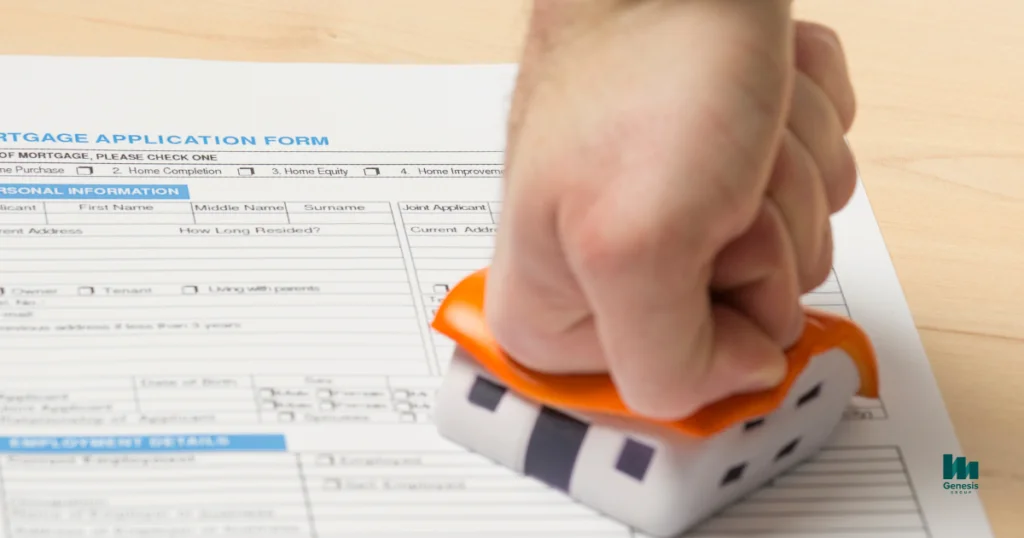Demystifying the Canadian Mortgage Stress Test:
A Comprehensive Guide for Homebuyers

On this Page
Mastering the Mortgage Stress Test
The mortgage stress test is a crucial part of the Canadian mortgage market, ensuring that borrowers can afford their mortgage payments even if interest rates increase. In this comprehensive Mortgage Stress Test guide, we explain the purpose, mechanics, and impact of the stress test on your mortgage application. With this essential knowledge, you’ll be well-prepared to navigate the Canadian mortgage landscape and secure the best mortgage for your needs
What is the Stress Test?
The stress test is a set of guidelines that assess a borrower’s ability to make mortgage payments under potentially higher interest rates. It applies to both insured and uninsured mortgages and aims to protect borrowers and lenders from potential financial difficulties if rates were to rise in the future.
How Does the Stress Test Work?
The stress test requires borrowers to qualify at a higher interest rate than the one offered by their lender. In Canada, the qualifying rate is the greater of the following two rates:
- The Bank of Canada’s five-year benchmark rate (currently at 5.25%)
- The borrower’s contract rate (the rate offered by the lender) plus 2%
Borrowers must prove that they can afford monthly mortgage payments at the qualifying rate, even if their actual mortgage rate is lower.
Who is Affected by the Stress Test?
The mortgage stress test applies to all Canadian homebuyers, including first-time buyers, those renewing their mortgages, and individuals refinancing or switching lenders. Both insured and uninsured mortgages are subject to the stress test.
How the Stress Test Affects Your Mortgage Application
The stress test can impact your mortgage application in the following ways:
- Reduced borrowing capacity: Since you must qualify at a higher interest rate, your borrowing capacity may be lower than you anticipated.
- Increased emphasis on creditworthiness: The stress test makes it more important than ever to maintain a good credit score, stable employment, and a manageable debt-to-income ratio.
Tips for Passing the Mortgage Affordability Assessment
Here are some strategies to help you pass the stress test and secure a mortgage that fits your financial situation:
- Reduce your debt: Pay off high-interest debts and lower your overall debt-to-income ratio.
- Increase your down payment: A larger down payment can help lower your mortgage amount and make it easier to pass the stress test.
- Opt for a longer amortization period: A longer amortization period will result in lower monthly payments, which can help you qualify at the higher stress test rate.
- Work with a mortgage broker: Mortgage brokers have access to a wide range of lenders and can help you find a mortgage product that meets your needs while navigating the stress test requirements.
Understanding the stress test is crucial for successfully navigating the mortgage market and securing the best mortgage for your needs. By familiarizing yourself with the stress test guidelines and following the tips outlined in this guide, you’ll be better prepared to meet the stress test requirements and achieve your homeownership goals. Remember, working with mortgage professionals like those at the Genesis Group can provide valuable guidance and support as you tackle the stress test and secure the best mortgage for your unique situation.
FAQ
What is the Mortgage Stress Test?
The Mortgage Stress Test is an assessment used by Canadian lenders to ensure borrowers can afford their mortgage payments even if interest rates rise. It evaluates your financial stability and ability to make mortgage payments under higher interest rate conditions.
Why was the Mortgage Stress Test introduced?
The Mortgage Stress Test was introduced by the Canadian government to protect borrowers and the housing market from potential financial instability due to rising interest rates. It aims to ensure that homeowners can continue to afford their mortgages even in less favorable economic conditions.
How does the Mortgage Stress Test work?
The Mortgage Stress Test requires lenders to qualify borrowers at a higher interest rate than the actual mortgage rate. This higher rate is either the Bank of Canada’s five-year benchmark rate or the actual mortgage rate plus 2%, whichever is higher.
Who needs to take the Mortgage Stress Test?
The Mortgage Stress Test applies to all Canadian borrowers applying for a mortgage from a federally regulated lender. This includes first-time homebuyers, those renewing their mortgages, and individuals refinancing their homes.
What factors are considered in the Mortgage Stress Test?
The Mortgage Stress Test considers various factors, including your income, debt levels, credit score, and the mortgage amount you’re applying for. Lenders use this information to determine if you can handle mortgage payments at the higher qualifying rate.
How does the Mortgage Stress Test affect my mortgage application?
The Mortgage Stress Test may impact the amount you can borrow. If you don’t qualify at the higher rate, you may need to adjust your budget, consider a lower-priced home, or save for a larger down payment.
Can the Mortgage Stress Test affect my existing mortgage?
The Mortgage Stress Test primarily affects new mortgage applications and refinancing. However, if you’re renewing your mortgage with a different lender, you may need to pass the stress test again.
Are there any exemptions to the Mortgage Stress Test?
Certain types of mortgages, such as some private and non-federally regulated loans, may be exempt from the Mortgage Stress Test. However, it’s essential to check with your lender for specific details.
How can I prepare for the Mortgage Stress Test?
To prepare for the Mortgage Stress Test, focus on improving your financial health. This includes paying down debt, saving for a larger down payment, maintaining a good credit score, and ensuring a stable income.
What are the benefits of the Mortgage Stress Test?
The Mortgage Stress Test helps ensure long-term financial stability for homeowners. It reduces the risk of defaulting on mortgage payments due to rising interest rates, protecting both borrowers and the broader housing market.
Can I appeal the results of the Mortgage Stress Test?
The results of the Mortgage Stress Test are based on your financial information and the qualifying rate. While you can’t appeal the results, you can work on improving your financial situation and reapply when you’re better prepared.
How often is the qualifying rate for the Mortgage Stress Test updated?
The qualifying rate for the Mortgage Stress Test is periodically updated by the Bank of Canada. It’s essential to stay informed about current rates and how they may impact your mortgage application.
Where can I find more information about the Mortgage Stress Test?
For more information about the Mortgage Stress Test, consult your lender, visit the Bank of Canada’s website, or explore resources from the Financial Consumer Agency of Canada.

